✓ Joining us on our Whatsapp Channel: 💬 Explore and Escape!.
Booking through us:
✓ 🏩 🛌 Handpicked Luxury Stays in Budget: Booking.com | Agoda.com
✓ 🍹⛱️ Deals on Private xfers, SIM Cards, City tours, Day trips : 📍🗺️ GetYourGuide | 🛵🧳 Klook
If you have done the things to do in Japan, you’d know there are quite a few of them here in Ibaraki.
Embark on a journey to explore the hidden gems of Ibaraki, a land steeped in history and blessed with natural beauty.
From wandering through serene Zen gardens to marveling at stunning waterfalls, Ibaraki holds a treasure trove of activities that will leave you enchanted and spellbound.
Without further ado listed below are some of the most fun things to do in Ibaraki:
1. Kairakuen Park-Mito
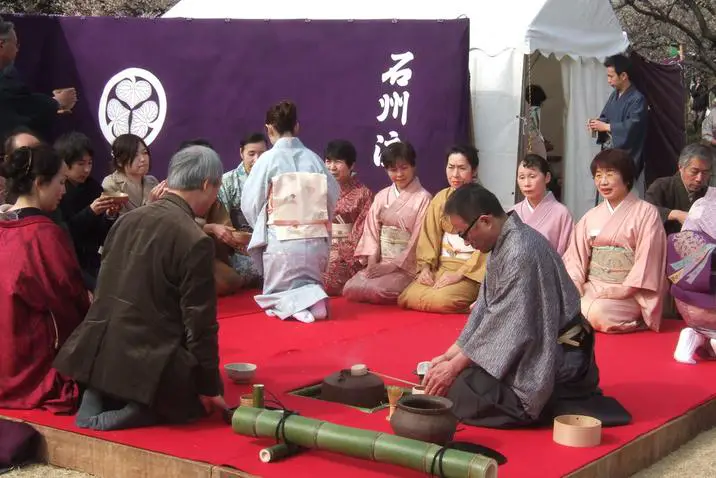
What to see or do: Admire over 3,000 plum trees that blossom in the park during late February to early April, stroll around the tranquil gardens with a picturesque view of a pond, and enjoy picnics or outdoor activities on the sprawling lawns.
Don’t miss: The famous “Three Great Gardens of Japan” along with Kenroku-en Garden in Kanazawa and Koraku-en Garden in Okayama.
Insider travel tips: Visit during the Mito Plum Festival held from late February to mid-March to enjoy local plum products, sake, and dance performances.
The park can get crowded during peak season, so try to arrive early in the day or on weekdays. Also, wear comfortable shoes as the park is quite spacious.
Lastly, climb to the top of Kobuntei Pavilion for a panoramic view of the garden.
2. Hitachi Seaside Park-Hitachinaka
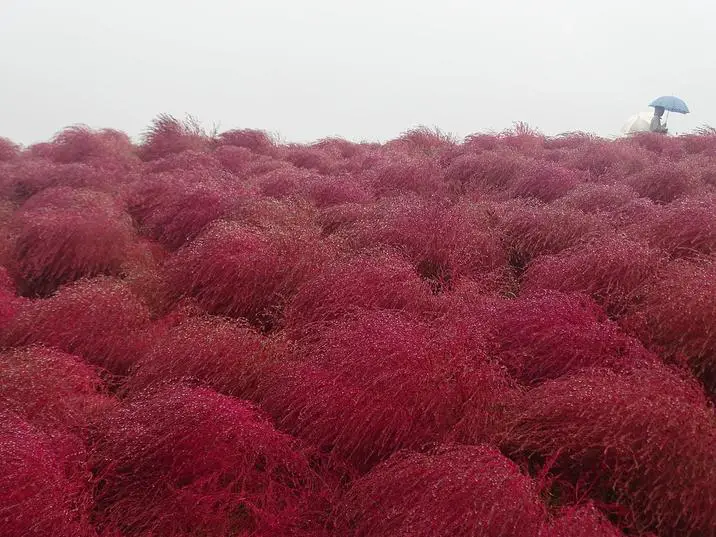
Hitachi Seaside Park is a sprawling public park located in Hitachinaka, Ibaraki, known for its vast fields of blooming flowers.
What to see or do: Visitors can explore the park’s numerous themed gardens, including the Miharashi Hill garden, which offers stunning views of the Pacific Ocean, and the Suisen garden, which features over 4.
5 million stunning spring daffodils. The park also has cycling paths and a Ferris wheel for aerial views.
Don’t miss: The park’s famous Nemophila fields, which are covered in a sea of baby blue flowers every April and May, creating a breathtaking sight.
The Kochia Hill, which boasts a hill covered with red bushy plants that turn into a brilliant shade of red in autumn, is also worth a visit.
Insider travel tips: Arrive early in the morning to avoid crowds and make sure to check the blooming calendar to see which flowers are in season.
Don’t forget to bring sunscreen, a hat and sunglasses as the park offers limited shade and can be quite sunny.
3. Fukuroda Falls-Daigo
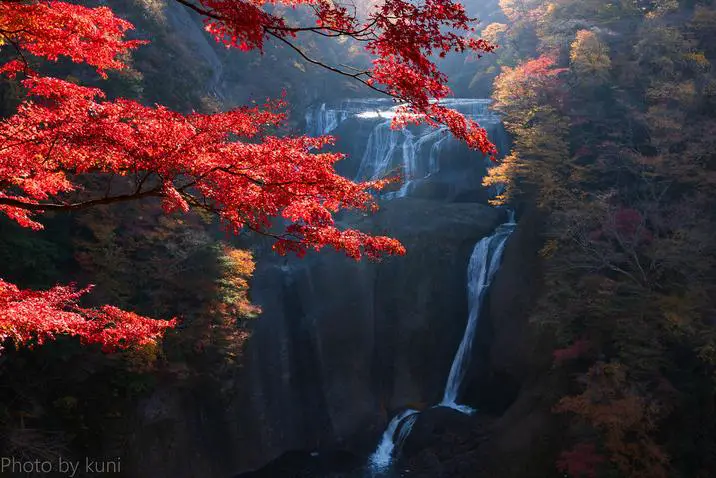
Fukuroda Falls is a four-tiered waterfall located in Daigo, Ibaraki prefecture. It is one of the three most beautiful waterfalls in Japan.
What to see or do: Enjoy the breathtaking view of the waterfall from various observation points on the walking trail. Take a boat ride to get closer to the waterfall.
Don’t miss: Visit during the autumn season when the foliage surrounding the waterfall turns into a beautiful array of colors.
Insider travel tips: Plan to visit early in the morning or on a weekday to avoid the crowds. Wear comfortable shoes as the walking trail can be steep and slippery.
Bring a raincoat or umbrella as the area is prone to sudden rain showers.
4. Tsukuba Space Center-Tsukuba
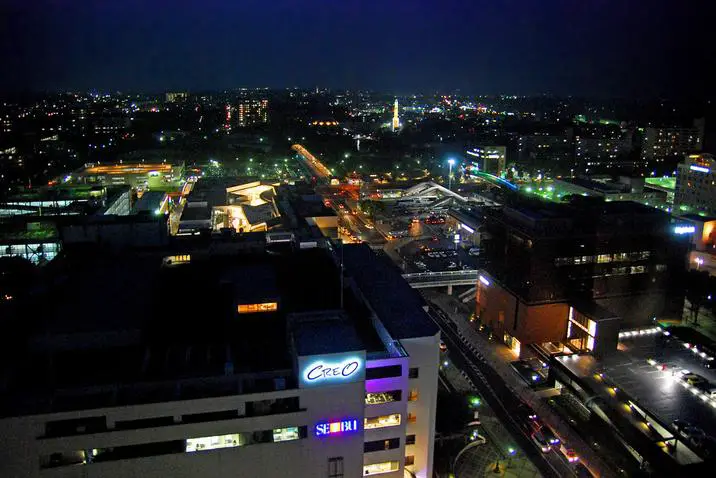
Tsukuba Space Center is a space technology research center and one of the main operational bases of the Japan Aerospace Exploration Agency (JAXA).
What to see or do: Visitors can take a guided tour of the center’s facilities, including the control room, the rocket test and assembly facilities, and the space exhibition hall.
You can see the development of Japan’s first rockets, the responses to the earthquake/tsunami, and even a full-size recreation of the Japanese Experiment Module, the country’s contribution to the International Space Station (ISS).
Don’t miss: The center’s museum is a highlight, housing an extensive collection of space-themed exhibits, including a full-size replica of the spacecraft “Hayabusa” that brought asteroid samples back to Earth.
And the most thrilling part is, you can experience what an earthquake feels like in a simulator, it’s certainly an unforgettable experience.
Insider travel tips: – Booking in advance is required to participate in the guided tours.
5. Ibaraki Prefectural Museum of History-Mito
The Ibaraki Prefectural Museum of History is a modern facility that showcases the history, culture, and folklore of the Ibaraki Prefecture and its surrounding regions.
What to see or do: Explore the museum’s extensive exhibits, which cover everything from prehistoric times to the present day.
Visitors can learn about the area’s agriculture, industry, arts, and crafts, and see artifacts and artworks ranging from pottery and swords to paintings and sculptures.
Don’t miss: Be sure to check out the museum’s collection of ancient Jomon pottery, which is considered one of the largest and finest in Japan.
Also, don’t miss the displays on the region’s samurai history and the reconstructed Edo-period town.
Insider travel tips: The museum is located within walking distance of Mito Station and makes for a great day trip from Tokyo. Visitors should plan to spend at least a few hours exploring the exhibits.
The museum’s shop has a great selection of regional gifts and souvenirs, and the tea room offers traditional Japanese sweets and tea.
6. Kashima Shrine-Kashima
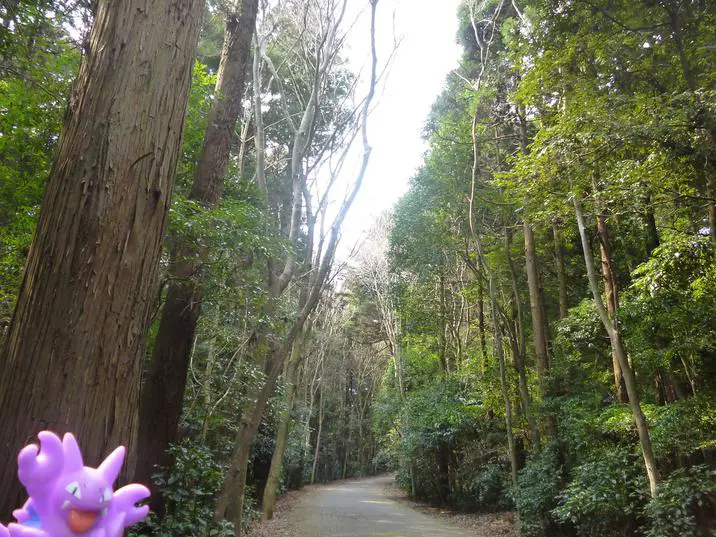
Kashima Shrine is a Shinto shrine located in Kashima, Ibaraki prefecture, Japan. It is one of the oldest and most revered shrines in the country, dating back to at least 660 BC.
What to see or do: Visitors can explore the expansive grounds of the shrine, which include several gardens, ponds, and walking paths. The main hall of the shrine is an architectural marvel, with intricate wood carvings and ornate designs.
Visitors can also witness traditional Shinto rituals and ceremonies.
Don’t miss: The legendary “Deer Cry Pavilion,” which is said to produce a unique sound that is different from any other animal or instrument.
Other highlights include the “Five-Shrine Tour,” which takes visitors on a journey to five smaller shrines located on the grounds, each with their own unique history and significance.
Insider travel tips: Make sure to wear comfortable shoes, as the shrine grounds are expansive and require a decent amount of walking.
Also, try to visit during sunrise or sunset, when the light hits the main hall and surrounding gardens in a truly breathtaking way.
Additionally, consider visiting during the “Kashima Gatalympics,” a festival held every July where participants compete in a variety of unusual, muddy games and challenges.
7. Mito Toshogu Shrine-Mito
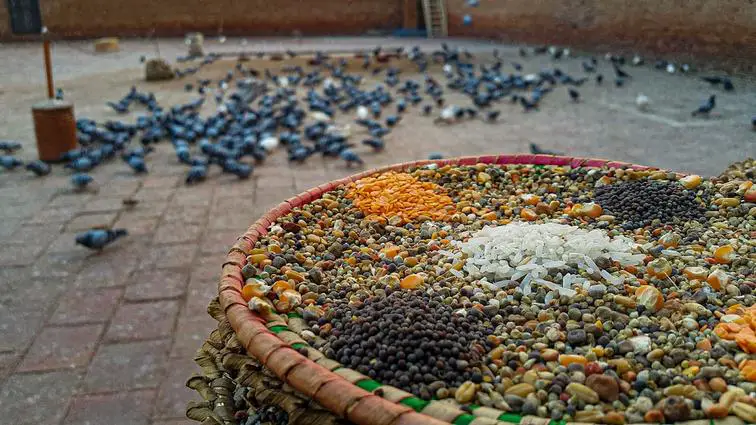
Mito Toshogu Shrine, one of the best Toshogu shrines in Japan, dedicated to Tokugawa Ieyasu who founded the Tokugawa Shogunate.
What to see or do: Visitors can admire the beautiful architecture, including the main hall and the drum tower, decorated in intricate, colorful carvings.
The shrine also houses the famous vermilion-lacquered Sacred Stable, built in 1955, where the sacred horses of the Tokugawa family are enshrined.
Don’t miss: The procession of beautiful lanterns during the Mitosan Chrysanthemum Festival in November is a sight to behold, as is the annual Yabusame ritual held in May, where horseback riders demonstrate their impressive archery skills.
Insider travel tips: Visit early in the morning or on a weekday to avoid crowds and take your time exploring the peaceful grounds. Be sure to check the shrine’s calendar for special events and festivals.
For souvenir shopping, head to the small street near the entrance which is filled with shops selling local crafts and snacks.
8. Ryujin Big Suspension Bridge-Hitachiota
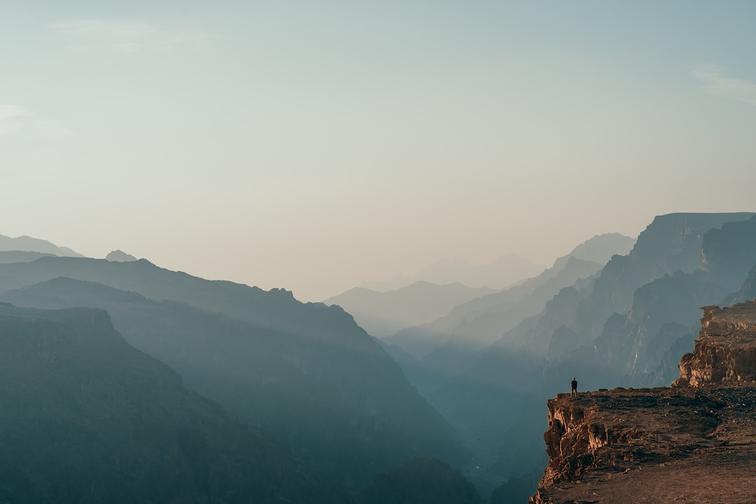
Ryujin Big Suspension Bridge is a popular tourist attraction in Hitachiota, Ibaraki known for its impressive size and scenic views.
What to see or do: Visitors can walk across the 375-meter long suspension bridge and take in scenic views of the Ryujin Gorge and surrounding forests.
The bridge also has glass panels on the floor, allowing visitors to look down at the gorge below.
Don’t miss: The night illumination of the bridge, which offers a completely different experience as the colors and lights reflect off the gorge and create a magical atmosphere.
Insider travel tips: Visitors can purchase tickets in advance to avoid long lines and save time.
It is also recommended to visit during the early morning or late afternoon to avoid crowds and get the best views of the gorge.
Additionally, be sure to wear comfortable shoes as the bridge can sway with the wind.
9. Kasama Inari Shrine-Kasama
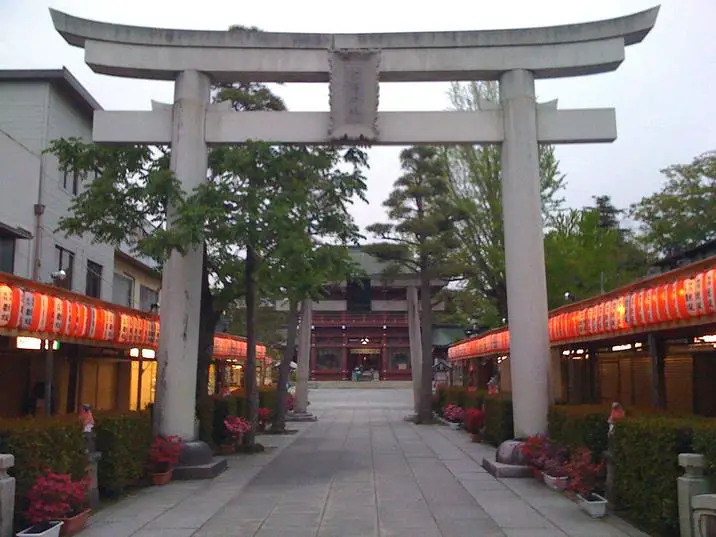
Kasama Inari Shrine is a Shinto shrine located in Kasama City, Ibaraki Prefecture, Japan. It is believed to have been founded over 1,300 years ago.
What to see or do: Visitors to Kasama Inari Shrine can explore the beautiful grounds, which include several torii gates, a bridge over a koi pond, and a large temple building.
You can also purchase good luck charms and other souvenirs at the gift shop.
Don’t miss: Don’t miss the beautiful red and white torii gates that lead up to the main shrine building. Also make sure to check out the koi pond, which is home to several large and colorful fish.
Insider travel tips: – Kasama Inari Shrine is especially popular during the New Year’s holiday, so be prepared for crowds if you visit during this time.
10. Oarai Isosaki Shrine-Oarai
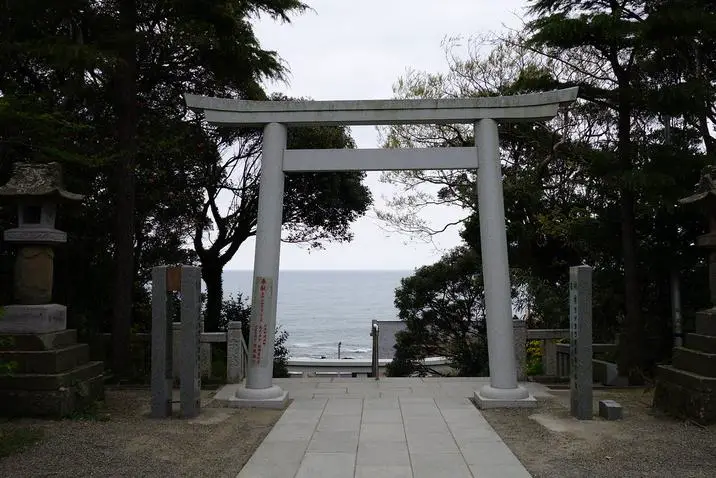
Oarai Isosaki Shrine is a beautiful Shinto shrine located on a rocky coastline in the town of Oarai, Ibaraki.
What to see or do: The shrine’s main hall is located atop a hill and offers stunning views of the Pacific Ocean. The shrine also has a unique torii gate that stands in the water and is only accessible during low tide.
Visitors can take a peaceful walk around the shrine’s grounds, which feature several smaller shrines and a large stone lantern.
Don’t miss: Be sure to try the local specialty, “Isosaki no Megumi,” which is a delicious fish cake made with squid and shrimp.
It is available at the shrine and in shops nearby.
Insider travel tips: Plan your visit around low tide to be able to walk out to the torii gate. It can be quite slippery, so wear sturdy shoes.
Additionally, visit during the annual Isosaki Shrine Festival in July for a lively and colorful celebration.
11. Shirosaki Castle-Omitama
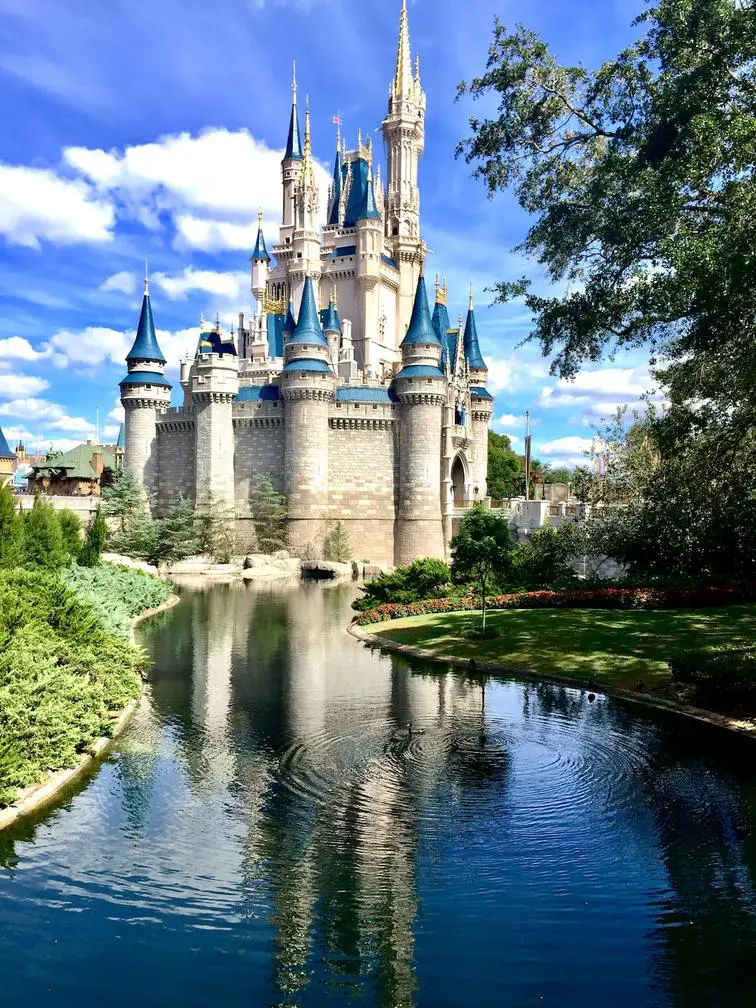
Shirosaki Castle is a historic Japanese castle located in Omitama, Ibaraki.
What to see or do: Visitors can explore the castle grounds and view the castle’s restored gate, walls, and moat. It is also possible to climb up to the castle keep and enjoy panoramic views of the surrounding countryside.
Don’t miss: Make sure to visit the nearby Shinto shrine and the traditional Japanese garden located within the castle grounds.
Insider travel tips: Consider visiting during cherry blossom season in early spring for breathtaking views of the castle surrounded by cherry blossom trees. Bring comfortable shoes as there is plenty of walking involved on the castle grounds.
12. Bando Tamamura Honten-Mito
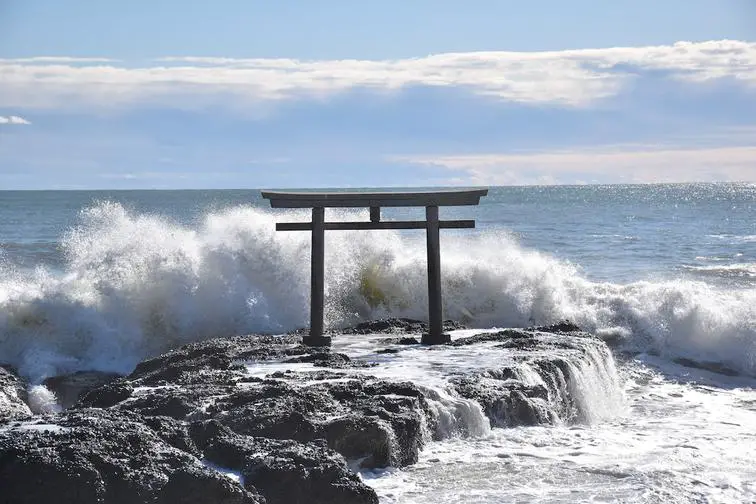
Bando Tamamura Honten-Mito is a traditional Japanese sweet shop located in Mito, Ibaraki, that has been in operation for over a century.
What to see or do: Visitors to Bando Tamamura Honten-Mito can explore the history of the shop and learn about traditional Japanese sweets.
The shop offers a variety of sweets such as mochi, yokan, and dorayaki, which can be enjoyed in the cozy tea room.
Don’t miss: One of the specialties of Bando Tamamura Honten-Mito is the “Mito Komon Mochi,” a delicious mochi filled with red bean paste and wrapped in a bamboo leaf.
Insider travel tips: It is recommended to arrive early in the day as some items may sell out quickly. Also, be sure to try the various samples offered throughout the shop to discover new favorites.
13. Mito Komon Shrine-Mito
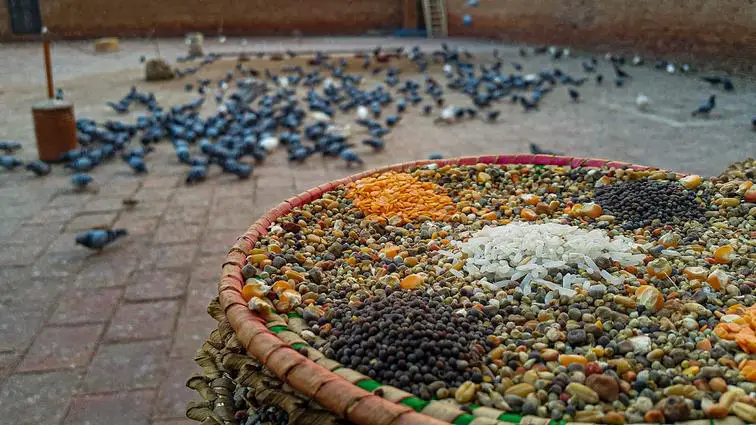
Mito Komon Shrine is a Shinto shrine in Mito city of Ibaraki prefecture in Japan dedicated to the famous historical figure Tokugawa Mitsukuni, also known as Mito Komon.
What to see or do: At Mito Komon Shrine, visitors can explore the scenic shrine grounds, learn about the life of Mitsukuni, and appreciate the numerous statues and artifacts that depict his important contributions.
The pathway to the main hall of the shrine is lined with beautiful orange torii gates. Visitors can also write their wishes on ema wooden plaques and tie them to a designated area.
Don’t miss: Do not miss the opportunity to see the bust of Mitsukuni and the surroundings decorated with colorful autumn leaves during the fall season.
There is also a small gift shop that sells various souvenirs related to the shrine and Mitsukuni.
Insider travel tips: – The best time to visit Mito Komon Shrine is during the autumn season when the leaves around the shrine turn red and yellow.
14. Aqua World Ibaraki Prefectural Oarai Aquarium-Oarai
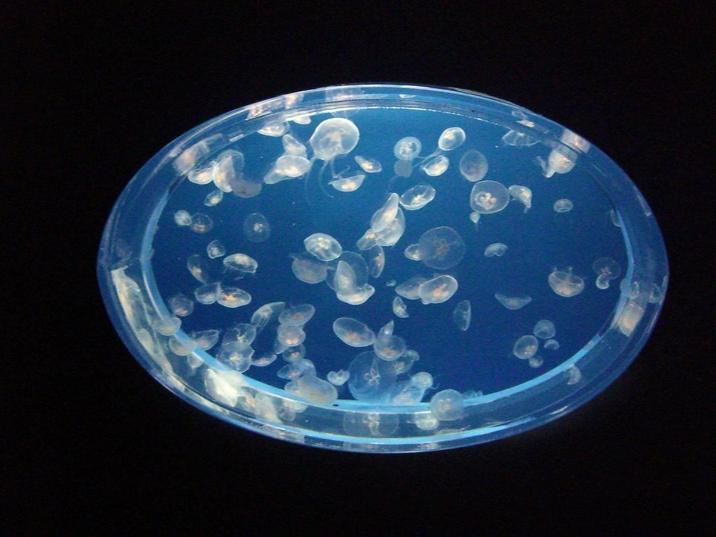
A popular aquarium located in Oarai, Ibaraki Prefecture showcasing a variety of marine life.
What to see or do:
Don’t miss:
Insider travel tips:
15. Mount Tsukuba-Tsukuba
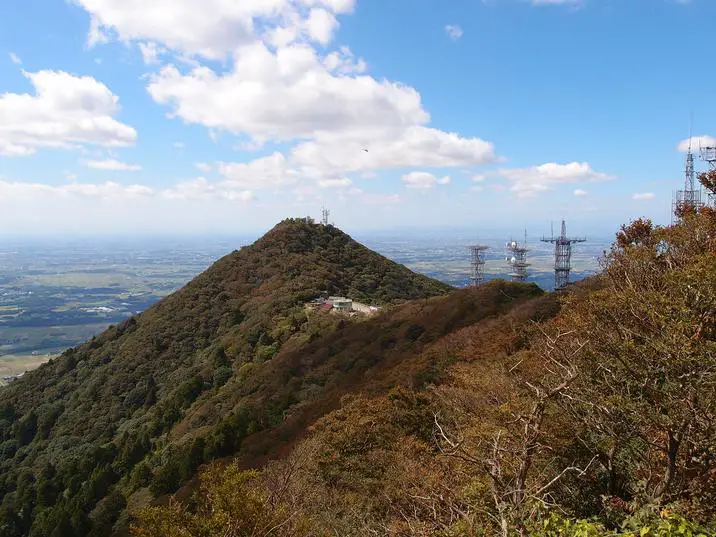
Mount Tsukuba is a popular destination for hiking, located in the Ibaraki Prefecture of Japan. It is a twin-peaked mountain, consisting of Nantai and Nyotai peaks.
What to see or do: Hiking is the most popular activity on Mount Tsukuba, with several trails leading up to the peaks. Visitors can also take a cable car or lift to access the trails.
The mountain is known for its scenic views of the surrounding area, especially during autumn when the leaves change color.
Don’t miss: At the peak of Nantai, there is a Shinto shrine called Tsukubasan Shrine, which is said to have been established over 3000 years ago.
It is a popular spot for visitors to explore and offer prayers.
Insider travel tips: – Be prepared for steep and rocky terrain on the hiking trails, suitable shoes and hiking gear are recommended.